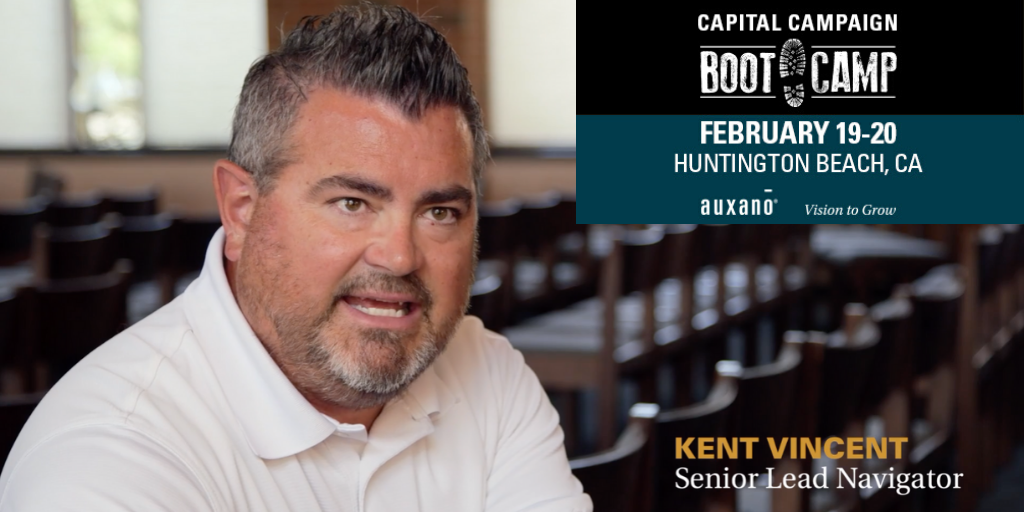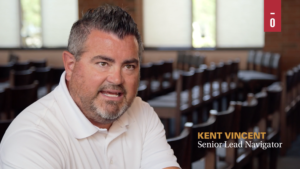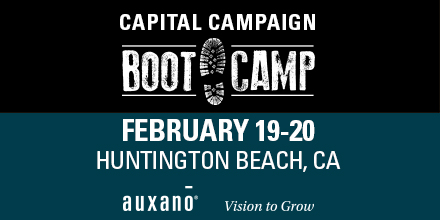
How to See Beyond Today: Understand Uncharted Possibilities
It has been said that all leaders live under the same sky, but not all view the same horizon. Some leaders see a wider horizon and keep their eye on the emerging skyline. Continual learning contributes to their sense of adventure and their ability to steer their organization. Others, however, unknowingly wear blinders. The shifting horizons don’t signal new opportunities because they are unanticipated and out of view.
In this sense, strategic planning is often limited because it keeps blinders on leadership. Auxano founder Will Mancini calls this “fallacy of predictability.” The assumption is that the near future will resemble the recent past. But rapid cultural change has meddled with this assumption. Change now happens so fast that the planning processes of yesteryear are obsolete. Unfortunately, not even the future is what it used to be.
If the North American church is going to avoid the slow but sure death guaranteed by “we’ve always done it that way,” it will have to shift its understanding of both the past that was and the future that is not going to be more of the same.
According to Reggie McNeal, the churches that prepare for the new world will ride the wave of the growth that is possible. Those who don’t prepare will continue to plan their way into cultural irrelevance, methodological obsolescence, and missional ineffectiveness in terms of being kingdom outposts.
The future belongs to those who prepare for it, not just those who plan it.

THE QUICK SUMMARY – Canoeing the Mountains by Tod Bolsinger
Explorers Lewis and Clark had to adapt. While they had prepared to find a waterway to the Pacific Ocean, instead they found themselves in the Rocky Mountains.
You too may feel that you are leading in a cultural context you were not expecting. You may even feel that your training holds you back more often than it carries you along. Drawing from his extensive experience as a pastor and consultant, Tod Bolsinger brings decades of expertise in guiding churches and organizations through uncharted territory. He offers a combination of illuminating insights and practical tools to help you reimagine what effective leadership looks like in our rapidly changing world.
If you’re going to scale the mountains of ministry, you need to leave behind canoes and find new navigational tools. Now expanded with a study guide, this book will set you on the right course to lead with confidence and courage.
A SIMPLE SOLUTION
Planning assumes predictability in much the same way that a hiker counts on a map to navigate. There are fixed points in the future that can be anticipated, because the mountain pathways and earth-shaped landmarks marks stay relatively fixed over time. Their presence is predictable.
But happens when you encounter something new, and totally unexpected?
In U.S. history, the story of Meriwether Lewis and William Clark and their Corps of Discovery from 1804-1806 documents their journey across the western United States, recently acquired in the Louisiana Purchase. President Thomas Jefferson commissioned the expedition shortly after the Louisiana Purchase in 1803 to explore and to map the newly acquired territory, to find a practical route across the western half of the continent, and to establish an American presence in this territory before Britain and other European powers tried to claim it.
Tod Bolsinger, in his book “Canoeing the Mountains,” uses the story of the Lewis and Clark expedition as a metaphor for leaders today who are planning for the future.
Driven by the belief of explorers over the previous three hundred years, Lewis and Clark knew a water route to the Pacific Ocean was somewhere out there.
They could not have been more disappointed.
What Lewis and Clark actually discovered that three hundred years of experts had been completely and utterly wrong. There was no Northwest Passage. No navigable river. No water route.
The driving assumption of the brightest, most adventurous entrepreneurial and creative leaders regarding this new world had been absolutely mistaken.
Today’s leaders are facing complex challenges that have not clear-cut solutions. These challenges are more systemic in nature and require broad, widespread learning. They can’t be solved through a conference, a video series, or a program. Even more complicated, these problems are very often the result of yesterday’s solutions.
Lewis and Clark’s expedition to explore the newly acquired Louisiana Purchase was built on a completely false expectation. They believed, like everyone before them, that the unexplored west was exactly the same geography as the familiar east. The story of what they did when they discovered that they – and everyone else before them – had been wrong is instructive and inspiring for leaders today.
The story of Lewis and Clark and the Corps of Discovery is the driving metaphor for our present moment in history. In every field, in every business, every organization, leaders are rapidly coming to the awareness that the world in front of us is radically different from everything behind.
In the words of futurist Bob Johansen, after centuries of stability and slow, incremental change, in less than a generation our world has become VUCA: volatile, uncertain, complex, and ambiguous. This VUCA world will only become more so in the days ahead and will require all leaders to learn new skills. What we have learned in our schools, through our experience, from our mentors, and by common sense will only take us so far. We now have to use every bit of what we know and become true learners who are ready to adapt to whatever comes before us.
Adaptive challenges (a phrase by Ronald Heifetz in “Leadership on the Line) are the true tests of leadership. They are challenges that go beyond the technical solutions of resident expert or best practices, or even the organization’s current knowledge. They arise when the world around us has changed but we continue to live on the success of the past.
Tod Bolsinger, Canoeing the Mountains
A NEXT STEP
Author Tod Bolsinger believes that, to live up to their name, local churches must be continually moving out, extending themselves into the world, being the missional, witnessing community we were called into being to be: the manifestation of God’s going into the world, crossing boundaries, proclaiming, teaching, healing, loving, serving, and extending the reign of God.
In short, churches need to keep adventuring or they will die.
Robert Sutton, professor of management science and engineering at the Stanford University School of Engineering, has developed breakthrough thinking – what he calls “weird ideas” – to help organizations foster new ideas while sustaining performance.
Gather your leadership team and work through the following list of his ideas, modified for a ministry setting, to help you think about new ideas and actions.
- During the early stages of a new ministry idea, don’t study how others have approached it.
- If you know a lot about a potential problem and how others have solved it in the past, ask people who are ignorant of it to study it and help solve it. Young people, including children, can be especially helpful for this task.
- Ask new hires (especially those fresh out of school) to solve problems or do tasks that you “know” the answer to or you can’t resolve. Get out of the way for a while to see if they generate some good ideas.
- Find people working on analogous issues in different organizations, fields, and industries, and ask them how they would solve the problem or do the job.
Excerpt taken from SUMS Remix 110-1, released January 2019
This is part of a weekly series posting excerpts from one of the most innovative content sources in the church world: SUMS Remix book excerpts for church leaders.
SUMS Remix takes a practical problem in the church and looks at it with three solutions; each solution is taken from a different book. Additionally, a practical action step is included with each solution.
As a church leader you get to scan relevant books based on practical tools and solutions to real ministry problems, not just by the cover of the book. Each post will have the edition number which shows the year and what number it is in the overall sequence. (SUMS Remix provides 26 issues per year, delivered every other week to your inbox).
>> Subscribe to SUMS Remix <<

Tags: Canoeing the Mountains, Future, Planning, Preparing for the Future, SUMS Remix, Tod Bolsinger




























